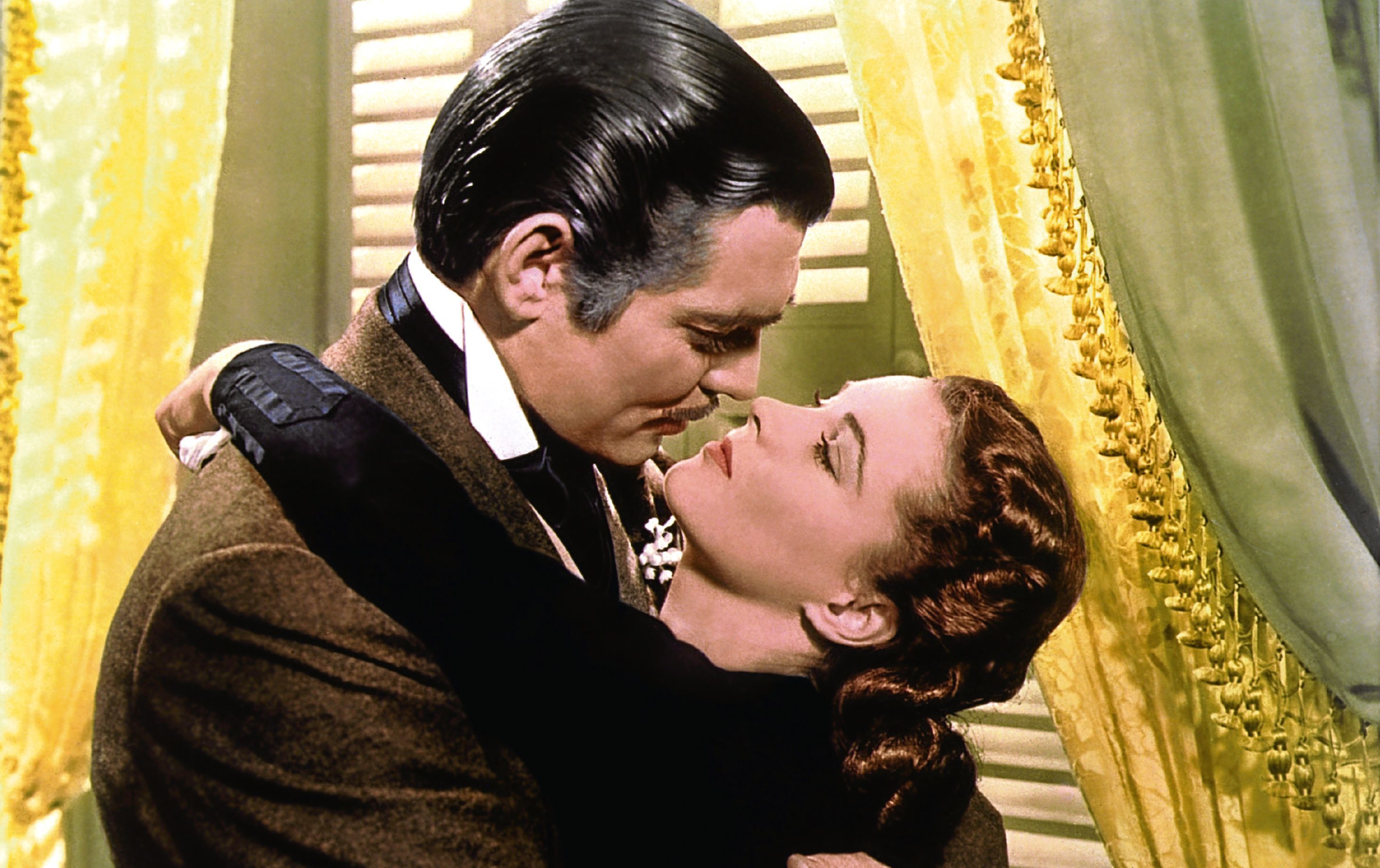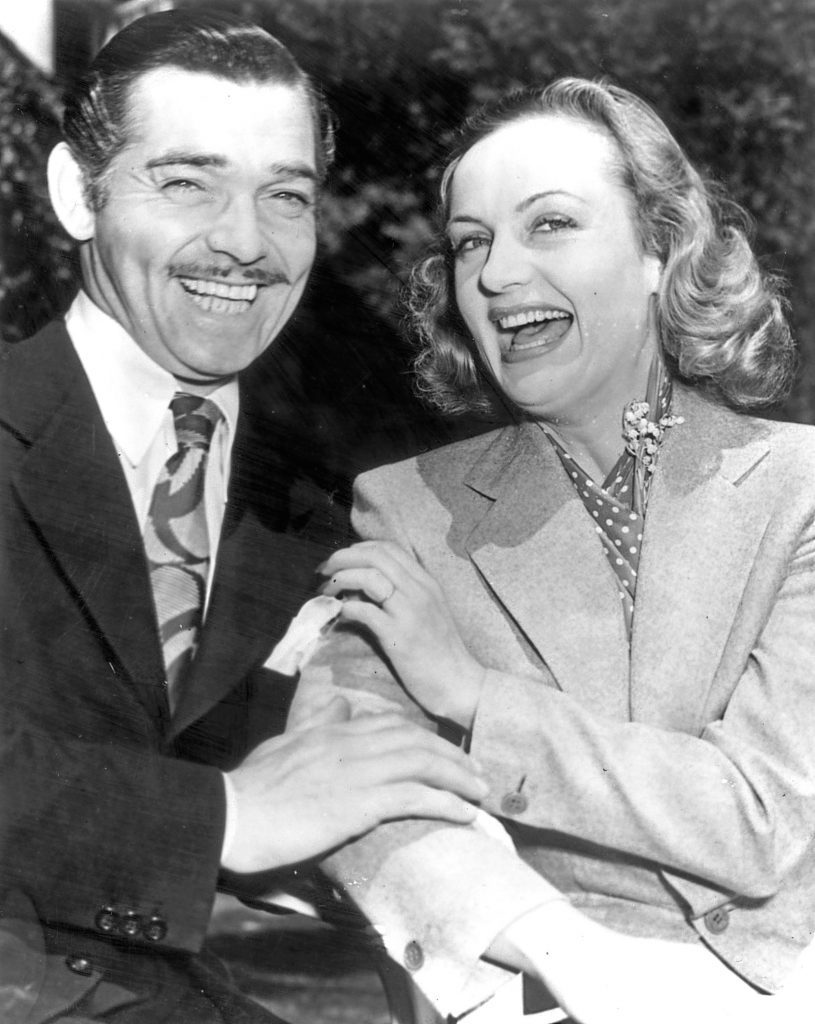
MOVIE star Clark Gable was — and remains —showbiz royalty.
There have been many acting legends over the years, but Clark still leaves a lasting impression on those who see him on screen.
After all, he has the honour of delivering one of the most-famous film quotes ever.
As if I need to confirm, the one I mean — “Frankly, my dear, I don’t give a damn” — was voted the No 1 movie line of all time by the American Film Institute in 2005.
Born in Ohio, USA, on February 1, 1901, Clark had a great future ahead of him — but getting into films was no easy task, partly due to the fact that he had bad teeth.
The son of an oil-well driller, Clark, too, worked on the oil fields, and saw acting as a chance to get away from that kind of career.
His acting coach, Josephine Dillon — 17 years his senior — would become his first wife and, though she helped him by paying to have his teeth repaired and his hair styled, Clark still didn’t find it easy to get into Hollywood.
And this was down to the fact that he also had sizeable ears.
A role in one movie saw crew trying to tape his ears back, something the star did not relish. And it didn’t last very long!
“I was pretty sore because they insisted on taping my ears back,” said Clark. “One day, the tape snapped loose and one ear flapped in the breeze. That was the end of the taping.”
Entrepreneur Howard Hughes had commented: “His ears made him look like a taxicab with both doors open.”
But while Clark had set out to be a film star, he didn’t think he was anything special, brushing off his “King of Hollywood” moniker, saying: “I don’t believe I’m king of anything. There’s no special light that shines inside me and makes me a star. I’m just a lucky slob from Ohio.
“I happened to be in the right place at the right time, and I had a lot of smart guys helping me — that’s all.”
He demonstrated this down-to-Earth side when he gave away his Oscar for It Happened One Night, in 1934.
It seems Clark thought it was more important to win an Academy Award than to own one, and so he gave it to a little boy who thought the trophy looked pretty.
It was returned to his widow after Clark’s death.
If Clark’s ears were a barrier to his acting success, it wasn’t his only difficulty, with the star developing a gum infection in 1933.
It was so bad that he had to have most of his teeth removed and, as a result, had almost a full set of dentures in his early 30s.
He suffered from halitosis due to said dentures and his co-star on Gone With The Wind, Vivien Leigh, complained of the foul smell in scenes where she had to kiss him.
They got on very well besides, and the same can be said of his relationship with Hattie McDaniel, who played Mammy in the movie.
Clark was left fuming when Hattie won an Academy Award for Best Supporting Actress, but a colour ban meant that she wasn’t allowed to sit with the rest of her co-stars at the ceremony.
It angered Clark so much, he threatened to boycott the premiere.
Hattie persuaded Clark to go in the end, but he wasn’t afraid to make a stand for an issue that he believed in.
He could just as easily not have been her co-star, however, as he took some persuading to be in Gone With The Wind, dismissing it as a “woman’s picture”.
In the end, that 1939 role as Rhett Butler went on to become Clark’s most-famous, and he had no shortage of admirers, getting married five times over the course of his life.
After his marriage to his acting coach Josephine ended, he wed Maria Franklin, but they split eight years later.
His third marriage to Carole Lombard, the love of his life, ended when her plane crashed outside Las Vegas, killing everyone on board. The incident devastated Clark.
Spookily, a psychic had warned Carole: “Keep out of planes in 1942. There is danger in them for you.”
Although Clark married twice following Carole’s death (to Sylvia Ashley and Kay Williams), he was never the same.
After Carole’s passing, he wanted to do his bit for the war, sending a telegram to Franklin D Roosevelt, saying he wanted to join the army.
He volunteered for the Army Air Forces and trained as a photographer and aerial gunner, joining the First Motion Picture Unit (FMPU), and eventually being awarded the Distinguished Flying Cross and Air Medal.
Clark would, of course, return to movies after his stint in the Army.
By the time of his fial movie The Misfits, alngside Marilyn Monroe — Clark’s health was failing, with an excess of cigarettes and alcohol finally taking their toll on him.
He did his own stunts in The Misfits, and to say he wasn’t getting on with co-star Marilyn is an understatement.
He died of a heart attack in 1960, before the film’s release.
Ironically, he had said: “Working with Marilyn nearly gave me a heart attack. I have never been happier when a film ended.”
For many, his death didn’t just mean the death of a star, but the end of an era.
READ MORE
Top 10 Robert Redford films: No Sting in this tale, he’s a true movie icon
How John Wayne became a movie giant in the world of Westerns

Enjoy the convenience of having The Sunday Post delivered as a digital ePaper straight to your smartphone, tablet or computer.
Subscribe for only £5.49 a month and enjoy all the benefits of the printed paper as a digital replica.
Subscribe